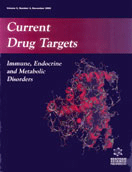Abstract
Rheumatoid arthritis (RA) is a chronic and destructive arthropathy with systemic features, the etiopathogenesis of which remains unclear. It is characterized by relapsing and remitting inflammation and hyperplasia of synovial cells. Proinflammatory cytokines, such as interleukin-2 (IL-2), play an important role in maintaining cartilage damage and severe destruction of the joints due to an uncontrolled activation of cellular immunity. An imbalance between proinflammatory and anti-inflammatory mediators is likely to contribute to the chronicity of the disease. Therefore, insight into the activation state of T-cells in different stages of the disease may be important to understand pathogenetic mechanisms underlying RA and could be a lead for the design of future therapeutic strategies. Because of the central role of the IL-2/IL-2 receptor (IL-2R) system in mediation of the immune system, monitoring and manipulation of this system has important diagnostic and therapeutic implications. New approaches in RA therapy with anticytokine agents, which block cytokines and their receptors, are now used as antirheumatic drugs in clinical practice.
Keywords: rheumatoid arthritis, cytokines, il-2, cyclosporin a
 2
2


















